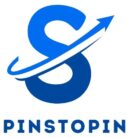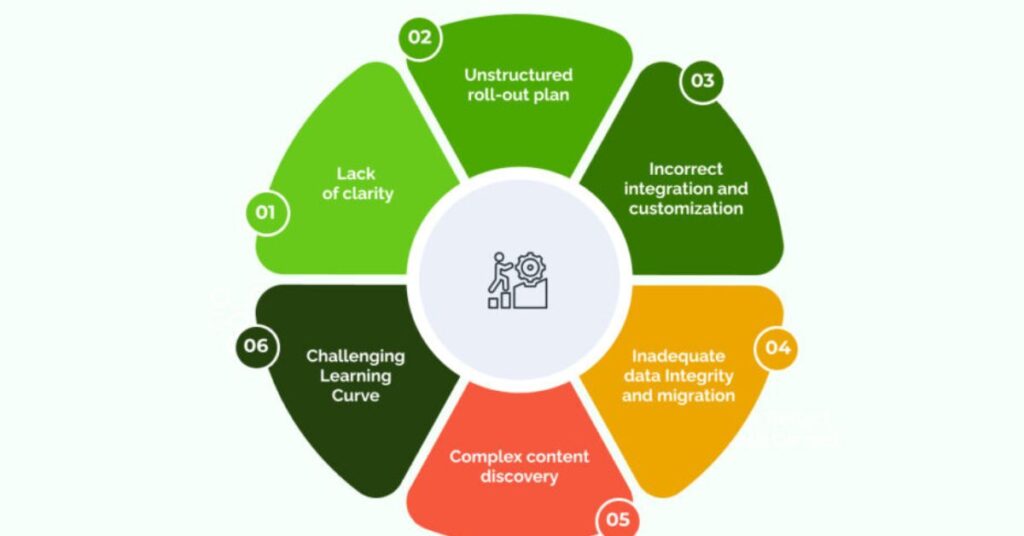User adoption represents the single most critical factor determining Salesforce implementation success, yet it remains the most challenging aspect for organizations to achieve and maintain consistently. Despite substantial technology investments and comprehensive training programs, many organizations struggle with low adoption rates, user resistance, and gradual abandonment of Salesforce in favor of shadow systems or manual processes. A Salesforce Support Services provider like Zivoke addresses adoption challenges through systematic approaches that combine technical optimization, user experience enhancement, and ongoing support strategies that drive genuine engagement and sustained platform utilization.
Understanding the User Adoption Challenge
The Reality of Adoption Statistics
Industry research consistently reveals concerning adoption patterns across Salesforce implementations. Studies indicate that only 60-70% of licensed users actively engage with Salesforce regularly, while many organizations report adoption rates below 50% despite significant implementation investments and training efforts.
Partial adoption creates additional challenges where users engage with basic features but avoid advanced capabilities that could provide substantial business value. This selective usage limits ROI while creating operational inefficiencies through manual workarounds and incomplete data entry.
Adoption decline over time represents an even more serious challenge as initial enthusiasm wanes and users revert to familiar tools and processes. Without ongoing support and optimization, adoption rates typically decrease 20-30% within the first year following implementation.
Root Causes of Adoption Resistance
Technical barriers frequently create adoption resistance when Salesforce configurations don’t align with natural user workflows or create additional complexity rather than simplifying business processes. Poor page layouts, confusing navigation, and excessive required fields can make basic tasks cumbersome and frustrating.
Performance issues including slow page loads, frequent errors, and system unreliability create user frustration that leads to adoption avoidance. When users experience technical problems regularly, they develop negative associations with Salesforce that persist even after issues are resolved.
Process misalignment occurs when Salesforce implementations force users to adapt their workflows to system limitations rather than configuring systems to support natural business processes. This mismatch creates resistance and drives users toward alternative tools that better match their working preferences.
The Business Impact of Poor Adoption
Revenue consequences from poor Salesforce adoption include incomplete customer data, missed sales opportunities, inaccurate forecasting, and reduced sales productivity. When sales teams avoid using Salesforce consistently, organizations lose visibility into pipeline health and sales performance.
Operational inefficiencies multiply when some users embrace Salesforce while others rely on alternative tools, creating data silos and communication barriers that reduce organizational effectiveness. Mixed adoption patterns prevent realization of Salesforce’s collaborative benefits.
Strategic decision-making suffers when adoption problems create incomplete or inaccurate data that undermines business intelligence and performance measurement. Poor adoption essentially transforms expensive Salesforce investments into unreliable information sources.
Professional Adoption Strategy Framework
User-Centered Design and Optimization
Professional Salesforce Support & Managed Services Providers approach adoption challenges through user-centered design principles that prioritize actual user needs and workflows over generic best practices. This approach begins with comprehensive user research that identifies specific pain points and improvement opportunities.
Workflow analysis examines how users actually accomplish their daily tasks versus how Salesforce is configured to support those activities. Professional providers identify disconnects and implement configurations that align with natural user behavior rather than forcing behavioral changes.
User experience optimization focuses on reducing friction points and simplifying common tasks through strategic configuration changes, automation implementation, and interface improvements. Professional optimization eliminates unnecessary complexity while enhancing productivity.
Behavioral Psychology and Change Management
Adoption improvement requires understanding psychological factors that influence user behavior, including resistance to change, comfort with existing tools, and perceived value from new systems. Professional providers apply change management expertise to address these psychological barriers systematically.
Motivation alignment connects Salesforce usage to individual user benefits rather than relying solely on organizational mandates. Professional providers help users understand how Salesforce can make their jobs easier, more successful, or more rewarding personally.
Habit formation strategies leverage behavioral psychology principles to encourage consistent Salesforce usage through positive reinforcement, incremental complexity introduction, and success recognition that builds momentum over time.
Continuous Support and Optimization
Ongoing user support extends far beyond initial training to include regular check-ins, performance feedback, and continuous optimization based on actual usage patterns. Professional providers maintain engagement through proactive support that addresses emerging challenges quickly.
Success measurement and feedback collection enable data-driven adoption improvement through understanding which aspects of Salesforce provide value and which create friction. Professional providers use this feedback to optimize configurations and processes continuously.
Community building and peer support programs leverage successful users to mentor struggling colleagues and share best practices that improve overall adoption rates. Professional facilitation helps create positive user communities around Salesforce usage.
Technical Optimization for Adoption
Performance and Reliability Enhancement
System performance directly impacts user satisfaction and adoption willingness. Professional providers implement comprehensive performance optimization including database tuning, page load optimization, and infrastructure improvements that ensure responsive user experiences.
Reliability improvements through proactive monitoring and maintenance prevent the technical issues that create user frustration and adoption resistance. Professional providers identify and resolve potential problems before they impact user productivity.
Mobile optimization ensures consistent user experiences across devices, enabling productivity regardless of location or device preferences. Poor mobile experiences often drive users toward alternative tools that provide better mobile functionality.
User Interface and Experience Design
Lightning Experience optimization leverages modern Salesforce capabilities to provide intuitive user interfaces that align with contemporary software expectations. Professional providers configure Lightning components and layouts to maximize usability and adoption appeal.
Navigation simplification reduces cognitive load and learning requirements through streamlined information architecture that helps users find necessary functions quickly. Professional providers eliminate unnecessary complexity while maintaining full functionality access.
Automation implementation reduces manual data entry requirements and automates routine tasks that users often perceive as tedious. Strategic automation enhances user experience while improving data quality and process consistency.
Data Quality and Relevance
Clean, accurate data encourages adoption by providing value that users recognize and appreciate. Professional providers implement data quality management processes that ensure Salesforce contains reliable, useful information that supports user success.
Relevant information presentation ensures that users see data and features that matter to their specific roles and responsibilities. Professional providers configure role-based layouts and permissions that eliminate irrelevant complexity while highlighting valuable features.
Integration optimization ensures that Salesforce provides comprehensive information access without requiring users to consult multiple systems. Professional integration management eliminates data silos that force users to rely on alternative information sources.
Training and Support Strategies
Role-Based Training Programs
Effective adoption requires training programs tailored to specific user roles rather than generic platform overviews. Professional providers develop training content that addresses real job functions and demonstrates practical value for each user type.
Scenario-based learning uses actual organizational data and processes to provide realistic training experiences that directly relate to user responsibilities. This approach helps users understand Salesforce value in context rather than abstract feature demonstrations.
Competency-based progression ensures that users master essential skills before advancing to complex features. Professional training programs build confidence through incremental success rather than overwhelming users with comprehensive functionality.
Ongoing Support and Mentoring
Post-training support addresses the reality that adoption challenges often emerge after formal training concludes. Professional providers offer ongoing assistance through help desk support, user office hours, and proactive check-ins that identify emerging issues quickly.
Peer mentoring programs leverage successful users to support colleagues who struggle with adoption. Professional providers facilitate these relationships and provide mentors with tools and techniques for effective user support.
Performance coaching helps individual users optimize their Salesforce usage for maximum personal and professional benefit. Professional coaching addresses specific user challenges while building enthusiasm for platform capabilities.
Success Recognition and Reinforcement
Achievement recognition programs celebrate user adoption milestones and demonstrate organizational appreciation for Salesforce engagement. Professional providers help design recognition programs that motivate continued improvement and peer influence.
Success story sharing highlights how effective Salesforce usage contributes to individual and team success. Professional providers help identify and communicate success stories that inspire broader adoption throughout the organization.
Gamification elements can make Salesforce usage more engaging through friendly competition, achievement badges, and progress tracking that appeals to users who respond to competitive motivation.
Measuring and Sustaining Adoption
Comprehensive Adoption Metrics
Login frequency provides basic adoption measurement but must be supplemented with engagement quality metrics including record creation, data updates, feature utilization, and process completion rates. Professional providers implement comprehensive measurement frameworks that reveal true adoption depth.
User satisfaction surveys and feedback collection provide qualitative insights into adoption barriers and improvement opportunities. Professional providers conduct regular adoption assessments that identify specific areas requiring attention.
Business outcome correlation connects adoption improvements to measurable business results including sales performance, customer satisfaction, and operational efficiency. This correlation helps justify continued adoption investment while identifying optimization opportunities.
Continuous Improvement Processes
Regular adoption reviews examine usage patterns, identify struggling users, and assess configuration effectiveness in supporting user success. Professional providers establish systematic review processes that enable proactive adoption support.
Configuration optimization based on actual usage data ensures that Salesforce continues evolving to better support user needs and preferences. Professional providers use adoption analytics to guide technical improvements that enhance user experience.
Training program evolution adapts support strategies based on user feedback and adoption measurement results. Professional providers continuously refine training approaches to address emerging challenges and leverage successful techniques.
Long-term Adoption Sustainability
Change management planning prepares for organizational changes, system updates, and new user onboarding that could impact adoption sustainability. Professional providers help organizations maintain adoption momentum through transitions and growth.
Culture development builds organizational cultures that value data-driven decision making and systematic process management supported by Salesforce. Professional culture development creates sustainable adoption environments that persist beyond individual training initiatives.
Leadership engagement ensures that adoption initiatives receive appropriate organizational support and resources. Professional providers help leadership understand their role in adoption success while providing tools for effective adoption advocacy.
Salesforce user adoption represents a complex challenge that requires specialized expertise, systematic approaches, and ongoing commitment to address effectively. Professional Salesforce Support & Managed Services Providers transform adoption from a persistent problem into a strategic advantage through comprehensive strategies that address technical, psychological, and organizational factors simultaneously. Organizations that invest in professional adoption support consistently achieve higher utilization rates, better business outcomes, and superior ROI from their Salesforce investments compared to those relying solely on internal resources to drive user engagement.
Also Read: Tubidy: The Complete Guide for 2025

